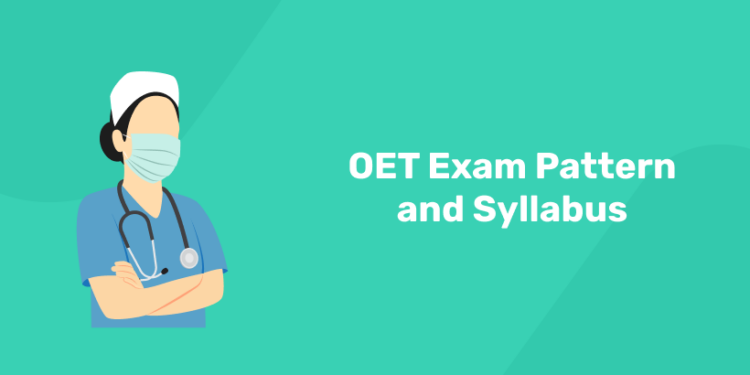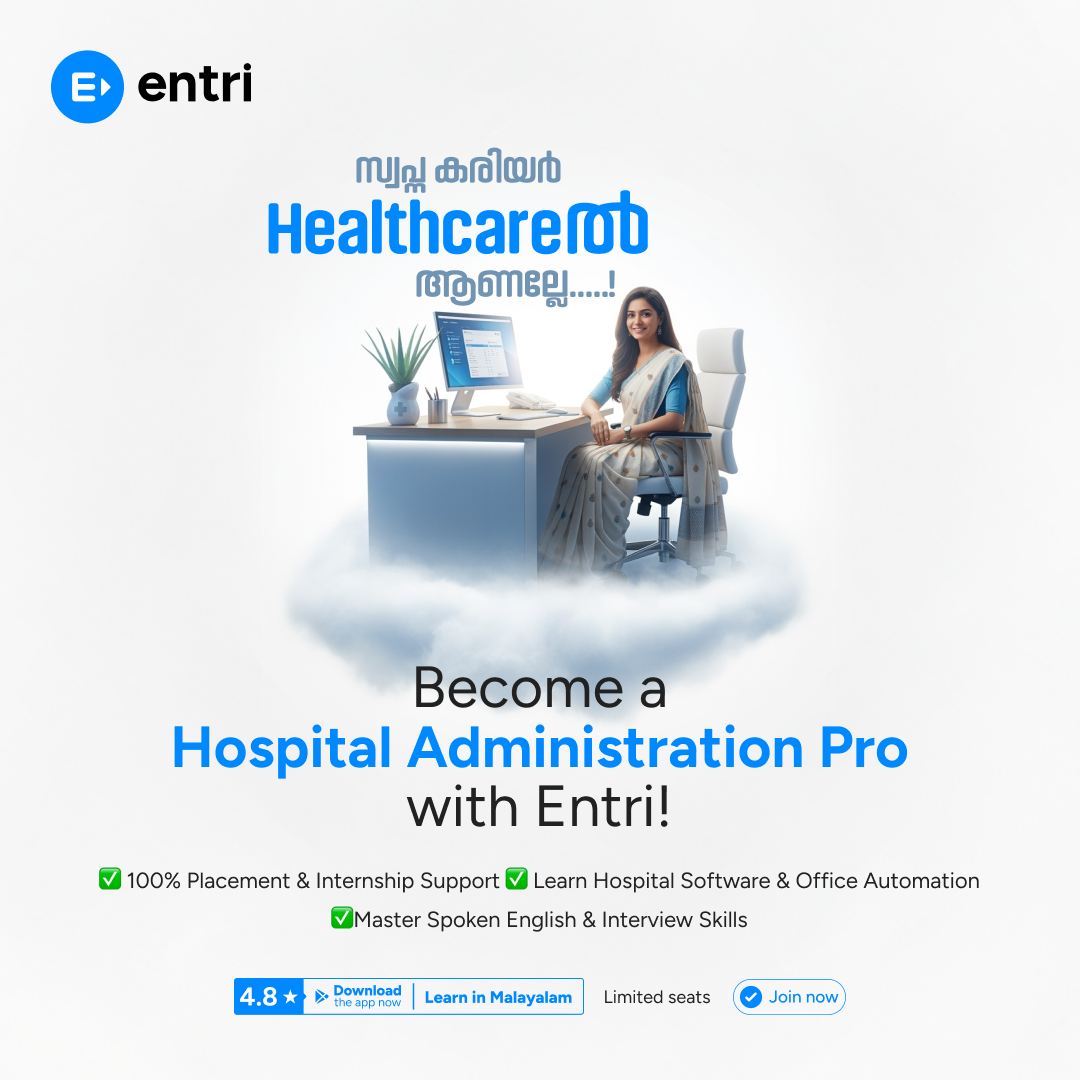Table of Contents
The Occupational English Test (OET) is a specialized language proficiency examination tailored for healthcare professionals. Designed to assess the English language skills of candidates who aim to practice in English-speaking environments, the OET evaluates four key skills—Listening, Reading, Writing, and Speaking. Unlike generic English language tests, OET incorporates real-world scenarios relevant to the healthcare industry, making it highly practical and industry-specific. Understanding the OET Exam Pattern and Syllabus will help the aspirants to prepare for the OET exam.
OET is recognized by healthcare boards, councils, and organizations across countries like the UK, Australia, New Zealand, Ireland, and Singapore. It is a gateway for professionals, including doctors, nurses, dentists, pharmacists, and physiotherapists, to demonstrate their language proficiency in the context of their professions.
This blog will explore the OET exam pattern and syllabus in detail, providing insights into the structure, components, and preparation tips to excel in the test.
OET Exam Pattern and Syllabus
OET Exam Pattern
Understanding the OET exam pattern is crucial for candidates aiming to achieve their desired scores. The test is structured to assess the four fundamental language skills: Listening, Reading, Writing, and Speaking. Each section is tailored to reflect real-life communication scenarios encountered in healthcare settings. Let’s break down each component:
1. Overview of the Exam
- Test Duration: Approximately 3 hours
- Test Medium: Paper-based, computer-based, or online (at home)
- Skill Areas Assessed: Listening, Reading, Writing, Speaking
- Scoring System: Grades range from A (highest) to E (lowest)
- Professions Covered: Medicine, Nursing, Dentistry, Pharmacy, Physiotherapy, and more
2. Detailed Section Breakdown
a. Listening Section
- Duration: 40 minutes
- Subsections:
- Part A (Consultation Extracts): Candidates listen to two patient-professional dialogues and complete note-taking tasks.
- Part B (Short Workplace Extracts): This includes listening to six audio extracts (e.g., team briefings or handovers) and answering multiple-choice questions.
- Part C (Presentation Extracts): Candidates listen to two healthcare-related presentations or interviews and answer multiple-choice questions.
- Skills Tested: Understanding gist, specific details, and speaker attitudes.
b. Reading Section
- Duration: 60 minutes
- Subsections:
- Part A (Expedited Reading Task): Extract information from four short healthcare texts to answer 20 questions.
- Part B (Careful Reading Task): Answer multiple-choice questions based on six short texts related to workplace communication.
- Part C (Comprehensive Reading Task): Interpret two longer texts and answer multiple-choice questions.
- Skills Tested: Scanning for information, understanding detailed meanings, and critical analysis.
c. Writing Section
- Duration: 45 minutes
- Task: Write a profession-specific letter, such as a referral, discharge, or transfer letter, based on case notes provided.
- Skills Tested: Grammar, organization, appropriateness of tone, and task achievement.
d. Speaking Section
- Duration: 20 minutes
- Task: Conduct two role-plays simulating healthcare scenarios. The examiner acts as a patient or caregiver.
- Skills Tested: Fluency, clarity, interaction, and delivery of appropriate responses.
OET Exam Syllabus
The OET syllabus is meticulously designed to align with the communication demands of healthcare professions. Below is an in-depth exploration of the syllabus components for each skill:
1. Listening Syllabus
- Part A (Consultation Extracts):
- Scenarios: Patient consultations and interactions.
- Focus: Note-taking and identifying key details.
- Part B (Short Workplace Extracts):
- Scenarios: Staff briefings, policy updates, or professional discussions.
- Focus: Understanding main points and specific details.
- Part C (Presentation Extracts):
- Scenarios: Talks, interviews, or presentations related to healthcare topics.
- Focus: Comprehending speaker opinions and nuanced information.
2. Reading Syllabus
- Part A (Expedited Reading):
- Task: Quickly locate specific details from short texts such as notices, charts, or leaflets.
- Skill Focus: Skimming and scanning for rapid comprehension.
- Part B (Careful Reading):
- Task: Analyze short texts like workplace manuals, guidelines, or memos.
- Skill Focus: Understanding tone, purpose, and key messages.
- Part C (Comprehensive Reading):
- Task: Interpret complex healthcare articles or reports.
- Skill Focus: Drawing inferences and interpreting in-depth arguments.
3. Writing Syllabus
- Task Overview:
- Compose a single letter based on provided case notes.
- Scenarios may include:
- Referral Letters: Referring a patient to a specialist.
- Discharge Letters: Summarizing treatment provided and follow-up plans.
- Information Letters: Communicating medical advice or updates.
- Assessment Criteria:
- Task Fulfillment
- Language Appropriateness
- Organization and Cohesion
- Vocabulary Range
- Grammar Accuracy
4. Speaking Syllabus
- Task Overview:
- Participate in role-plays designed for specific healthcare professions.
- Scenarios may include:
- Explaining diagnoses or treatment plans
- Providing reassurance to anxious patients
- Addressing concerns of caregivers
- Assessment Criteria:
- Relationship-building
- Information-gathering
- Information-delivery
- Use of lay language
- Clinical communication relevance
How to Prepare for OET: Topic-Wise Strategies
1: Who was the first woman President of India?
1. Listening
What to Expect: Healthcare-related audios, including patient dialogues, staff discussions, and professional presentations.
Preparation Strategies:
- Familiarize with Accents: Practice listening to English accents from the UK, Australia, and New Zealand.
- Practice Note-Taking: Develop shorthand skills to quickly capture key information.
- Use Official Materials: Leverage OET practice tests and sample audios.
Tips to Excel:
- Pay attention to tone and speaker intent.
- Listen for keywords such as symptoms, diagnoses, or treatments.
- Revisit audio transcripts to understand mistakes and improve accuracy.
2. Reading
What to Expect: A combination of short and long texts relevant to healthcare.
Preparation Strategies:
- Part A:
- Practice skimming and scanning techniques.
- Time yourself to improve reading speed without compromising comprehension.
- Part B:
- Focus on understanding the purpose of workplace documents.
- Pay attention to tone, such as advisory, instructional, or informative.
- Part C:
- Practice analyzing arguments and understanding complex discussions.
- Read professional journals or articles on healthcare topics.
Tips to Excel:
- Highlight key phrases and ideas while reading.
- For Part A, locate answers in the text systematically rather than guessing.
- Develop a habit of reading healthcare blogs, case studies, or manuals to enhance familiarity with terminology.
3. Writing
What to Expect: A single task such as writing a referral, discharge, or advice letter using case notes.
Preparation Strategies:
- Understand the Case Notes:
- Practice identifying relevant and irrelevant information.
- Prioritize details like patient history, current condition, and recommended actions.
- Structure Your Letter:
- Follow a clear format: Introduction, Body, and Conclusion.
- Ensure the tone is professional and concise.
- Grammar and Vocabulary:
- Use appropriate medical vocabulary.
- Maintain grammatical accuracy and logical flow.
Tips to Excel:
- Stick to the word count (180–200 words) and avoid unnecessary details.
- Practice with mock case notes to simulate real test scenarios.
- Use linking phrases like “The patient requires further evaluation” or “This is a follow-up on the recent diagnosis.”
4. Speaking
What to Expect: Two role-plays where you interact with the examiner as if they were a patient, caregiver, or colleague.
Preparation Strategies:
- Focus on Communication Skills:
- Practice building rapport by showing empathy and understanding.
- Learn to simplify medical jargon for patients.
- Role-Play Practice:
- Conduct mock role-plays with a partner or coach.
- Record your responses to evaluate fluency and clarity.
- Use OET Speaking Sample Materials:
- Familiarize yourself with common scenarios, such as explaining a diagnosis or calming an anxious patient.
Tips to Excel:
- Listen carefully to the patient’s questions and address their concerns.
- Maintain a professional tone while being empathetic.
- Practice using phrases like “I understand your concern,” or “Let me explain that in simple terms.”
Free UPSKILLING Courses!
Take your first step toward mastering in-demand skills, acing interviews, and securing top-tier jobs with Entri's free upskilling courses.
Start Learning!Conclusion
The OET is more than just an English language test—it is a career-advancing tool tailored to healthcare professionals. Its profession-specific approach ensures that candidates are tested on scenarios and vocabulary they are likely to encounter in their daily roles. By understanding the exam pattern and syllabus, you can focus your preparation on the areas that matter most.
Whether you’re a nurse seeking registration in the UK or a doctor planning to migrate to Australia, mastering the OET can be your key to unlocking global opportunities in healthcare. Equip yourself with the right strategies, leverage the available resources, and practice diligently to achieve your desired score.
| Related Articles | |
| OET Reading Samples for Nurses – Download PDF Free | OET Writing Samples for Nurses – Download PDF |
| OET Speaking Samples for Nurses – Download PDF Free | Mostly Asked OET Speaking Topics |
Free UPSKILLING Courses!
Take your first step toward mastering in-demand skills, acing interviews, and securing top-tier jobs with Entri's free upskilling courses.
Start Learning!Frequently Asked Questions
What is the purpose of the OET?
The OET is designed to assess English proficiency in healthcare professionals, focusing on language skills relevant to clinical settings.
Which professions are covered under the OET?
Professions include Medicine, Nursing, Dentistry, Pharmacy, Physiotherapy, Veterinary Science, and others.
What is the passing grade for OET?
Most organizations require a grade of B (350 points) or higher in each sub-test. However, requirements vary by country and profession.
How many times can I take the OET?
There is no limit to the number of attempts, but each attempt requires a new registration and payment.
Is OET easier than IELTS?
While OET and IELTS assess English skills, OET is often considered easier for healthcare professionals due to its industry-specific content.
What resources are available for OET preparation?
- Official OET Practice Books
- Online Practice Tests
- OET-specific coaching centers
- Official OET website resources
How long are OET results valid?
OET results are typically valid for two years, but it’s best to verify with the specific organization you’re applying to.
Can I take the OET online?
Yes, OET is available as an at-home test in addition to its traditional paper-based and computer-based formats.
How is the OET scored?
OET is scored on a scale from 0 to 500, with grades assigned as follows:
- A (450-500): Superior performance
- B (350-440): High level of performance
- C+ (300-340): Good level of performance
- C (200-290): Moderate level of performance
- D (100-190): Below threshold level
- E (0-90): Inadequate performance
Can I use OET scores for migration purposes?
Yes, OET scores are accepted by various immigration departments, such as in Australia and New Zealand.











